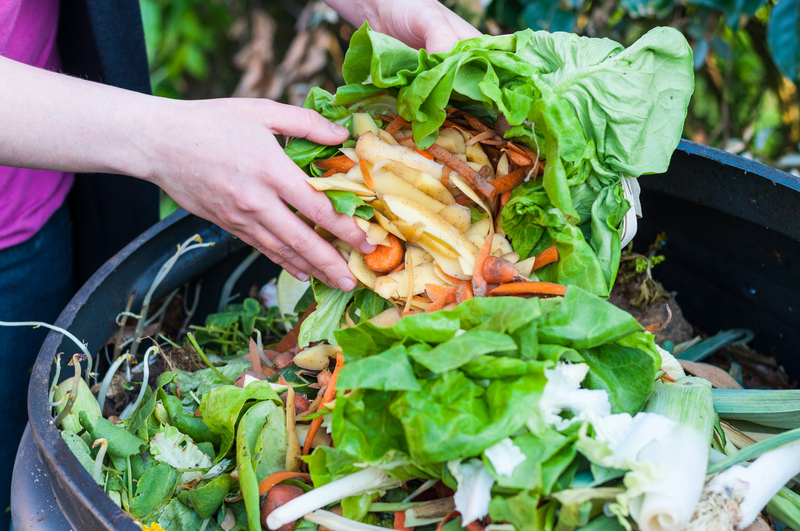The Right Way to Get Rid of PPE Waste Without Harming the Environment
PPE waste--including masks, gloves, gowns, and face shields--has skyrocketed worldwide, especially in recent years with the increase in healthcare precautions. Unfortunately, improper disposal of PPE waste poses significant dangers to the environment, wildlife, and public health. Learning how to dispose of PPE waste correctly and sustainably is not just responsible--it's crucial for protecting our planet.
In this comprehensive guide, we'll explore the best ways to get rid of PPE waste without harming the environment. We'll cover what PPE waste is, its environmental impact, sustainable disposal solutions, and actionable steps individuals, businesses, and organizations can take for eco-friendly PPE waste management.

Understanding PPE Waste: What Is It?
Personal Protective Equipment (PPE) is vital for health and safety in numerous settings--from hospitals and clinics to schools, workplaces, construction sites, and even everyday life. During the COVID-19 pandemic, PPE use exploded globally, leading to a new challenge: the safe and environmentally conscious disposal of PPE waste.
- Masks: Disposable surgical masks, N95, and other face coverings
- Gloves: Nitrile, latex, and vinyl gloves
- Gowns and Coveralls: Used in healthcare, labs, and some industries
- Face Shields and Goggles: Used for extra protection
- Shoe Covers & Hairnets: To prevent contamination in sterile environments
Each type of PPE consists of different materials--often plastic polymers like polypropylene--that are not biodegradable and present serious environmental hazards if not handled or disposed of responsibly.
How Improper PPE Waste Disposal Harms the Environment
Improper PPE waste management can have devastating and far-reaching effects on our environment.
- Plastic Pollution: Most disposable PPE is made from plastics that can persist in the environment for hundreds of years, contributing to pollution in land, rivers, and oceans.
- Wildlife Threats: Animals can ingest or become entangled in discarded masks and gloves, causing injury or death.
- Microplastic Generation: Over time, PPE breaks down into microplastics, contaminating soil, water sources, and eventually the food chain.
- Waste Management Strain: The sheer volume of used PPE can overwhelm regular waste management systems, leading to increased landfill use and improper disposal practices.
- Spread of Pathogens: Incorrectly disposed PPE can carry viruses, bacteria, and chemicals, risking further spread of disease and contamination.
The Scale of the Problem
According to several studies, billions of masks and gloves are discarded monthly worldwide. The United Nations estimated that 75% of used masks and other pandemic-related waste will likely end up in landfills or floating in the seas, exacerbating an already dire pollution problem.
Best Practices for Sustainable PPE Waste Disposal
So, what's the right way to dispose of PPE waste without harming the environment? The answer requires a mix of responsible personal behaviour, innovations in materials, appropriate waste streams, and policy changes.
1. Segregate PPE Waste from Regular Trash
PPE used in medical environments may be classified as infectious or hazardous waste. Even for household or non-clinical use, always bag PPE waste separately to prevent contamination and facilitate proper handling.
- Use designated PPE waste bins available in hospitals, offices, and public places.
- Tie off bags securely to prevent loose items escaping.
2. Do Not Recycle Regular PPE Waste
Most traditional PPE--including disposable masks and gloves--should not be placed in household recycling bins. Recycling facilities are not equipped for contaminated materials and improper disposal endangers workers and contaminates other recyclables.
3. Leverage Specialized PPE Recycling Programs
Recently, several organizations have launched PPE recycling initiatives that use advanced technologies to clean and process used PPE.
- TerraCycle: Offers Zero Waste Boxes for PPE, which can be filled and shipped back for responsible recycling.
- Government/Health Sector Programs: Some local authorities and health providers set up specialized collection bins for mask and glove recycling.
Look online for PPE collection points and recycling programs in your area. Typically, these programs break down PPE into plastic pellets for reuse in construction materials or other products, reducing waste sent to landfills.
4. Consider Reusable and Biodegradable Alternatives
Switching to reusable PPE wherever possible is among the best ways to minimize waste:
- Cloth Masks: Washable and reusable, reducing disposable mask use.
- Reusable Face Shields and Goggles: Designed for multiple uses and cleaning.
- Biodegradable Masks and Gloves: New products made from bamboo fiber or other eco-friendly materials are entering the market.
*Note:* Always ensure reusable PPE is adequately sanitized between uses.
5. Support and Advocate for Producer Responsibility
The burden of PPE waste shouldn't fall only on individuals. Manufacturers can contribute by:
- Developing biodegradable, compostable, or recyclable PPE.
- Running take-back or recycling schemes for used safety gear.
- Reducing excessive packaging.
*As consumers, we can support brands and policies that promote responsible PPE waste management.*
6. Educate and Train Staff for Proper PPE Disposal
For businesses, organizations, and institutions, regular training on the right way to handle and dispose of PPE waste is essential. This increases compliance and reduces risks to staff, customers, and the environment.
- Host workshops or information sessions.
- Display clear signage above PPE disposal bins.
- Regularly audit procedures and compliance.
How to Dispose of PPE Waste at Home
For individuals, particularly those outside of healthcare settings, here's a simple and effective approach to dispose of PPE waste in an eco-friendly way:
- Remove PPE carefully (do not touch outside surface of masks, gloves, etc.).
- Place the items in a dedicated trash bag (not recycling!).
- Seal the bag completely to prevent any contact or spillage.
- If required by local rules, place the sealed bag in a designated PPE waste collection point.
- When not available, dispose of the sealed bag with general waste--but ensure it is not loose and cannot be carried by wind or animals.
When possible, consider using washable cloth masks and reusable gloves, further reducing your contribution to PPE waste.
Innovative Solutions for Eco-Friendly PPE Waste Disposal
1. Chemical Recycling and Pyrolysis
Advanced recycling technologies, such as pyrolysis and chemical recycling, break down plastic PPE into basic chemical building blocks or fuel. Though not yet widely available, these processes can safely process contaminated plastics and produce useful outputs with less environmental impact than landfilling or incineration.
2. PPE Upcycling Initiatives
Some creative projects are upcycling used PPE into construction materials, bricks, or even street furniture. While this process requires careful decontamination, it offers a potential second life for discarded PPE and keeps plastic out of landfills.
3. Decentralized Sanitation and Sterilization Units
Onsite PPE waste sterilization machines are becoming popular in hospitals and companies, enabling safe processing before sending plastics for recycling. These units destroy pathogens efficiently and reduce waste transport risks.
What Businesses and Healthcare Facilities Should Do
Organizations that use large amounts of PPE have additional responsibilities and opportunities to improve their PPE waste footprint:
- Implement Clear PPE Waste Protocols: Establish and communicate detailed policies for PPE segregation, collection, storage, and disposal.
- Train Employees: Regularly update all staff on best practices.
- Partner with Specialized Waste Companies: Choose waste contractors who offer sustainable and certified disposal or recycling of PPE.
- Track and Report: Maintain records of PPE waste generation and disposal to monitor progress and identify improvement areas.
- Explore Product Alternatives: Pilot use of reusable or biodegradable PPE when feasible.
The Importance of Policy and Public Support
For long-term solutions, government and policy play a vital role in enabling the right way to get rid of PPE waste without harming the environment. This can include:
- Mandating PPE waste segregation for healthcare and large organizations.
- Supporting research into biodegradable and recyclable PPE.
- Investing in specialized recycling infrastructure for contaminated plastics.
- Setting standards or regulations for PPE design and end-of-life management.
- Raising public awareness campaigns about responsible PPE disposal.

5 Practical Tips for Eco-Friendly PPE Waste Management
- Only use PPE when absolutely necessary. Reduce unnecessary consumption whenever possible.
- Choose reusable PPE products whenever suitable for your risk level.
- Dispose of PPE properly: Never litter masks, gloves, or other PPE in public places.
- Encourage your community, school, or office to set up dedicated PPE waste bins.
- Volunteer or support organizations that are developing eco-friendly PPE waste solutions.
Conclusion: A Shared Responsibility
The surge in PPE use worldwide is a necessary response to public health threats, but we must not overlook the mounting environmental crisis posed by PPE waste.
By following the right way to get rid of PPE waste without harming the environment, we can protect both our health and our planet. This includes proper segregation, avoiding littering, embracing recycling and upcycling innovations, supporting new materials, and advocating for stronger policies and industry responsibility.
As individuals, organizations, and communities, we all have a role to play. Let's work together to ensure that the tools we use to stay safe today don't become tomorrow's pollution.
Every mask, glove, or gown disposed of responsibly is a step toward a cleaner, safer environment for all.
